It is amazing to see how quickly the world is changing around us. What seemed to be intact and perfect just a few years ago is getting destroyed by us humans.
One of the reasons why I fell in love with photographing nature is because it is my way of showing people that the beauty around us is very fragile and volatile. And if we don’t take any action now, all this beauty will someday cease to exist, not giving a chance for our future generations to enjoy it the same way we can today.
Hundreds of movies have been filmed, thousands and thousands of great pictures taken and yet the world is not listening. What can we do and is there hope? It is very unfortunate that we only act when a disaster of a great scale hits us and the unbalanced force of nature enrages upon us.
But we as photographers must continue to show the world the real picture out there – the deforestation of our rich lands, the pollution that is poisoning our fresh waters and causing widespread diseases, the melting of glaciers, the extinction of species and many other large-scale problems that are affecting the lives of billions around the world. Therefore, it is our responsibility as photographers to show the real picture.
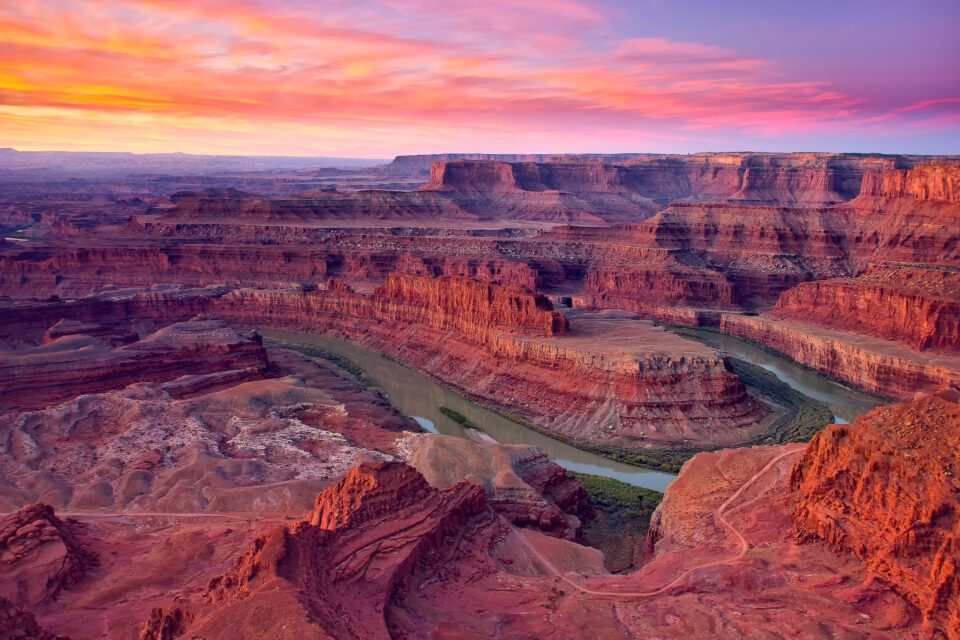
What is Landscape Photography?
Landscape photography is a form of landscape art. While landscape art was popularized by Western paintings and Chinese art more than a thousand years ago, the word “landscape” apparently entered the English dictionary only in the 19th century, purely as a term for works of art (according to Wikipedia).
Landscape photography conveys the appreciation of the world through beautiful imagery of the nature that can be comprised of mountains, deserts, rivers, oceans, waterfalls, plants, animals and other scenery or life.
While most landscape photographers strive to show the pureness of nature without any human influence, given how much of the world has been changed by humans, depicting the nature together with man-made objects can also be considered a form of landscape photography. For example, the famous Mormon Row at the Grand Teton National Park has been a popular spot for photographing the beautiful Tetons in the background, with the old barns serving as foreground elements.
Photographing landscapes involves three key elements: photo equipment, skill/technique, and light. Let’s look at all three elements one by one.
Photo Equipment
Good and reliable photo equipment is extremely important to achieve the best results for landscape photography. If your camera can take exceptional photographs, but cannot withstand extremely cold or hot temperatures, it will certainly limit you in what you can do. Therefore, it is best to have a camera that can both take good pictures and withstand tough weather conditions.
Why is the latter important? Because some of the best landscape photographs are taken in very challenging weather – during a storm, after a heavy snowfall, early in the morning at below freezing temperatures, etc. Take a look at the following picture of sand dunes I captured a while ago:
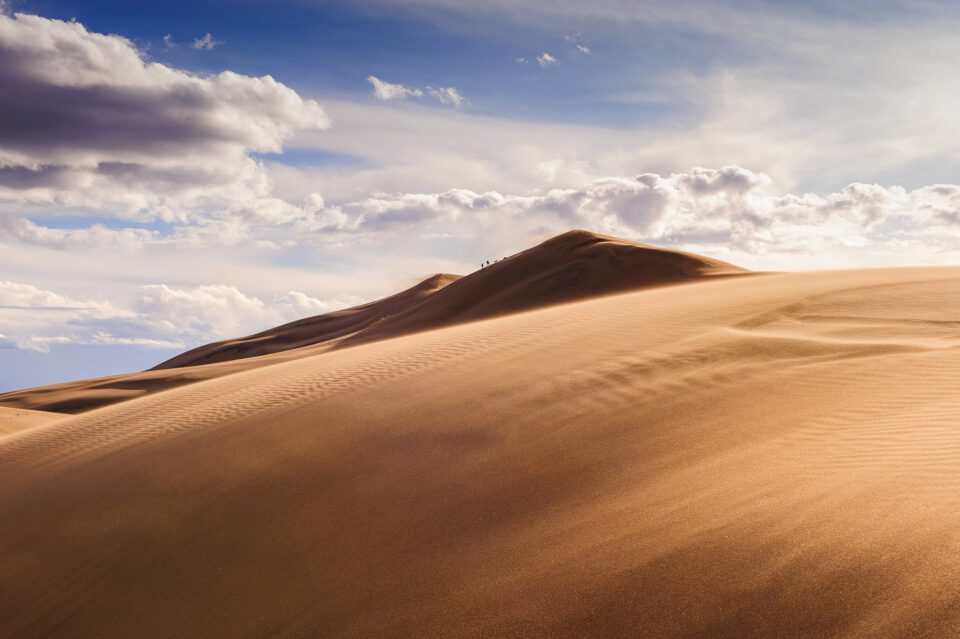
At first, you might think that the weather was nice and pleasant when I captured this photo. But the reality of the situation was quite the opposite – it was extremely cold and windy, with sand hitting my face like those icy snowflakes hit you when you ski.
The Nikon D700 I carried that day suffered pretty badly, with the sand piling up in its every dent and hole. My Nikon 24-70mm zoom ring was full of dust and I remember the screeching sound I had for months, because I could not get sand particles out of it.
Thankfully, both survived, and I was able to capture many more images like the one above afterwards. And this is just one example; I abused my camera gear like that countless times and always relied on it in the most challenging situations.
What about camera capabilities? No matter how weather resistant your camera is, it must be able to deliver images that are sharp and vibrant, and provide sufficient features for you to be able to capture even the most complex scenes. That’s where having a camera with a large sensor, rich in-camera features, good support and a wide selection of solid lenses / filters are important.
Camera Selection – Film or Digital?
The question of digital vs film is a never-ending debate and I do not have any intentions to bring up another heated debate over which one is better and why. I will simply state what is true for landscape photography today and what works best. For most people, a high-resolution digital camera is the way to go, because it is going to be simpler to use and one can get pretty amazing results. With digital, one can instantly preview images, take many exposures and combine them in post-processing, and even shoot multiple images to create an HDR or a panoramic image. Modern digital cameras today have excellent dynamic range that far surpasses that of film and it is very easy to nail things like focusing and exposure, especially with the right gear and technique. However, some photographers prefer to shoot landscapes with film using medium format and large format film cameras and if it is done right, it is possible to create spectacular images, with extreme detail and resolution. Film is certainly not for everyone, and the cost of owning and operating a large format film system can get quite high overtime, which is why most landscape photographers tend to use digital.
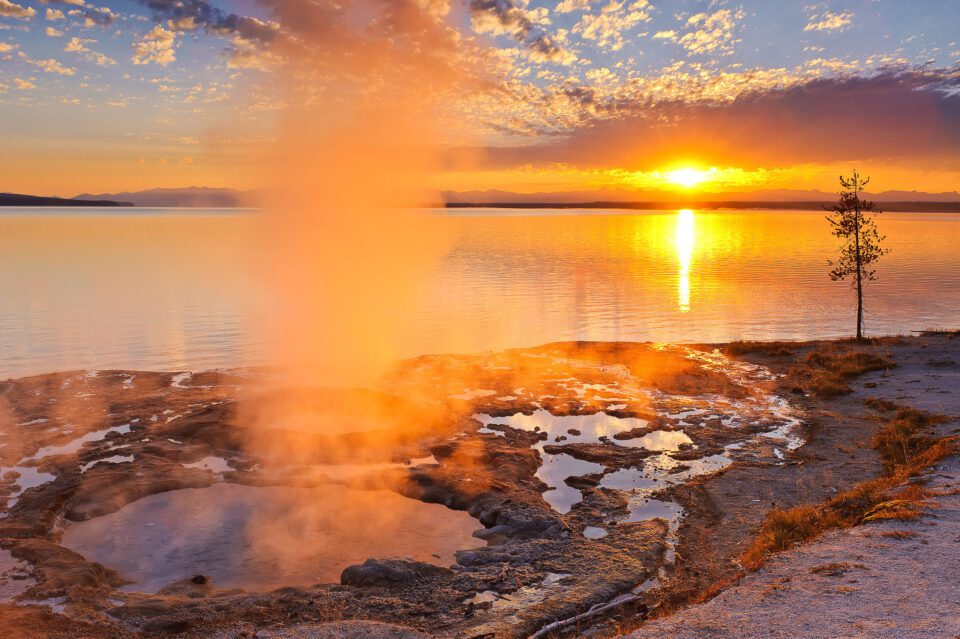
Film Systems
There are many different film systems out there at different price points. If you shoot medium format, Mamiya, Rollei and Hasselblad medium-format systems are quite popular. There are many large format systems out there and the more popular ones seem to be by Sinar and Linhof, but there are many more great choices and sizes. The selection of lenses for both medium and large format systems is also huge with big name brands like Nikon, Rodenstock and Schneider providing choices from wide angle to telephoto.
Digital Systems
Easiness of use, low cost, relatively short learning curve, immediate results, free unlimited exposures and much shorter post-processing times are the reasons why full-frame and cropped sensor camera systems became so popular. An entry-level DSLR or a mirrorless camera with all required accessories for photographing landscapes can be purchased for under $1,000 today. If one wants to step up to a full-frame camera, there are plenty of different high-resolution options from a number of different manufacturers such as Nikon, Canon, Sony, Panasonic, Pentax and Leica. And if that’s not enough, there are also medium format digital cameras available from companies like Fujifilm, Hasselblad, Phase One and Mamiya. There are plenty of choices for different needs and you will need to look into different options depending on your needs and your budget.
For those on tighter budgets, cheaper cropped sensor cameras are going to be less preferred, but most popular choices for landscape photography. Most popular because of lower cost, and less preferred due to typically minimal weather-sealing, potentially decreased dynamic range and a smaller feature set compared to higher-end options. When photographing landscapes, you are often faced with harsh and extreme conditions, and you will need to be extra careful when photographing in dusty, rainy / humid, snowy and sub-zero temperatures in order to keep your equipment functioning. In comparison, higher-end cameras are often specifically designed with superb weather sealing to withstand the toughest weather conditions without negatively affecting their performance.
To sum it all up, here is how I would categorize cameras, in the order of preference for landscape photography:
- Medium format digital cameras
- High-resolution full-frame digital cameras with premium features and weather sealing
- Low cost full-frame digital cameras with sufficient weather sealing
- High-end cropped-sensor cameras with sufficient weather sealing
- Entry-level cropped-sensor cameras
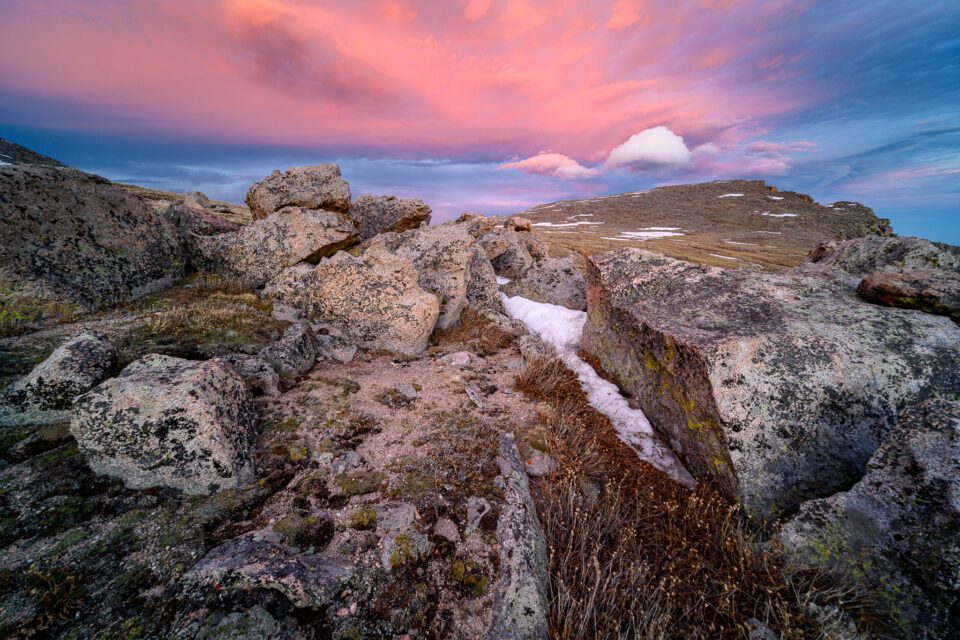
Let’s now move on to lenses – a key part of the photography setup for landscapes.
Lenses and Why They are Important
No matter how good your camera is, if the lens you have mounted on it is poor, you will get equally poor results. Lenses are like your eyes – if you have bad vision, the picture you see is going to be blurry. Therefore, it is extremely important to use lenses that have high levels of sharpness across the frame, good contrast, minimal ghosting and flare and other lens aberrations that can hurt your images. It is also important to make sure that your lenses are free from decentering issues that could damage all or parts of your images. When photographing portraits, the corner performance of lenses is typically not important – your subject is going to be close to the center of the frame most of the time. However, when it comes to landscape photography, corner sharpness becomes far more important, since foreground elements can be located on the lower part of the frame and sometimes even touch corners. That’s why it is important to look beyond center performance of lenses when evaluating them for landscape photography.
While selecting lenses, you have two selections – zoom lenses and prime / fixed lenses. For landscape photography, prime lenses used to be the number one choice (and still are for medium and large format cameras). However, with the latest advancements in optical technology, manufacturers are able to produce exceptionally good zoom lenses that can match and sometimes even surpass the quality and sharpness of some prime lenses. Zoom lenses have a big advantage over prime lenses due to their ability to zoom in / out, which I personally find very important for landscape photography. I have been in many situations, where I had to stand at a particular spot and could not physically move to frame my shot. In such situations, it is helpful to be able to use a zoom lens to get proper framing. I personally often carry both with me, which gives me greater flexibility, but if I were to choose only one lens, it would certainly be a zoom. Unfortunately, for medium format and large format systems out there, prime lenses are often the only choices that are available.

Best Lenses for Landscape Photography
So, what are the best lenses for landscape photography? With so many different prime and zoom lenses available from a variety of different manufacturers, it can get quite difficult to make the right selection, especially for a beginner. Personally, instead of focusing on one do-it-all lens that covers everything from wide-angle to telephoto, I would recommend to go for a set of high-quality lenses that will cover most of your needs. A good landscape photography lens kit should be comprised of a set of lenses from ultra-wide angle to telephoto. An ultra-wide angle lens will allow you to get close to subjects and show their grandeur; a normal range lens will probably be the most used lens in your arsenal for photographing most subjects, whereas a telephoto lens will allow you to focus on a particular feature of the landscape in front of you, or to perhaps photograph distant subjects.
While such a “trinity” of zoom lenses can be very useful to cover most landscape photography needs, some prime lenses can be still very useful to have in the field. For example, if you want to get into astrophotography, you will need a high-quality lens that is both wide-enough and fast enough to be usable for capturing the night sky. Zoom lenses, especially those that are f/4 and slower, are typically very limiting for astrophotography, which is why it is also helpful to have at least one prime lens in your camera bag. Personally, I really like the Nikon 20mm f/1.8G lens and find it to be an excellent, lightweight lens that can be very useful in the field for this reason. Those who prefer the quality of prime lenses to zooms will often end up going for a kit that is comprised of the following focal lengths: 14mm, 20mm, 35mm and 50mm. For telephoto needs, most prime shooters still opt for something like a 70-200mm f/2.8 or f/4, since prime telephoto lenses are often quite large and expensive.
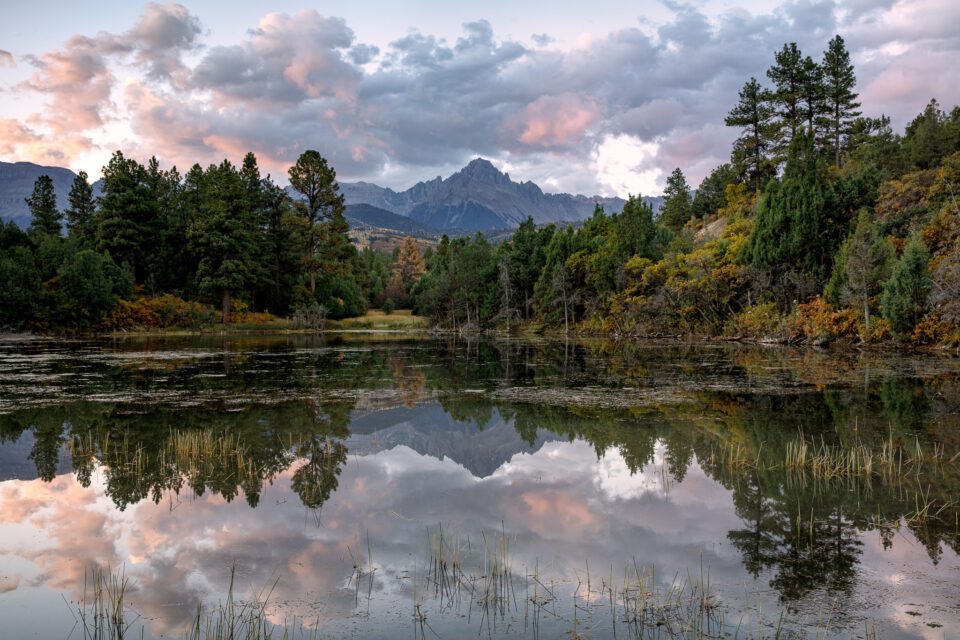
If I was limited to choose only one lens for landscape photography, it would be something like a 24-120mm or a 24-105mm. Out of all the different lenses I have used over the years, I came to conclusion that the focal lengths I use the most for my landscape photography are between 24mm and 100mm. If I was limited to two lenses, I would add a 70-200mm and if the limit was increased to three, it would be a fast 20mm f/1.8 prime…
Camera Support – Tripods
A landscape photographer without a tripod is a handicapped photographer. Although modern digital cameras are capable of producing amazing results at higher ISOs, some images are difficult and sometimes even impossible to capture without proper support. For example, it is impossible to photograph the night sky without a tripod. Photographing colorful clouds and the high dynamic range of scenes before and after sunsets would be extremely difficult without keeping camera mounted on a tripod. Another example is taking pictures of moving water (such as a waterfall) at slow shutter speeds. Basically, for any photography involving shutter speeds that are too slow for one to be able to hand-hold a camera without introducing camera shake, it is a good idea to use a tripod. Take a look at the below image that would have been impossible to capture hand-held:
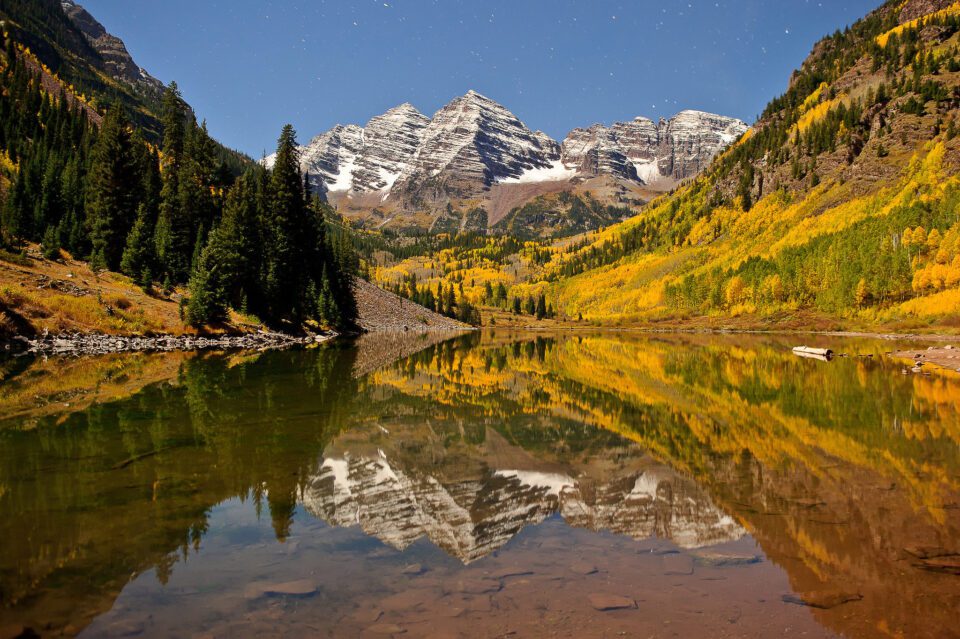
As you can see, the image was captured with a shutter speed of 30 seconds – there is no way I could have held the camera in my hands for that long without making the image look blurry!
I personally consider a tripod to be a must-have tool rather than an optional accessory. I once talked to a well-known landscape photographer about camera support and he stated that he could not think or compose his images until he put his camera on a tripod, even when shooting on a bright sunny day. If you struggle with badly aligned, blurry or noisy images, you might want to invest in a solid tripod – it will pay for itself very quickly, especially once you factor in your travel expenses and your time!
Don’t go for a cheap, flimsy tripod either. If you are still trying to figure out if landscape photography is for you or not, then by all means, go for a cheap, plastic tripod when you start out. However, if landscape photography is something you are genuinely interested in, then skip everything in the middle and go for a high-end tripod. Over the years, you will go through many cameras and lenses, but a solid tripod is something you will always keep reusing – it is always a worthy long-term investment. Don’t make the mistake of buying several tripods. Not only will you end up wasting more money, but you will also end up with a lot of frustration in the field.
Filters and Why they are Important
Let’s now move on to filters. Any experienced landscape photographer will tell you that filters are an essential and integral part of their landscape photography kit. Some shots are simply impossible to capture without specialized filters. There are three types of filters that I personally recommend for landscape photography: Circular Polarizing Filter, Neutral Density Filter and Graduated Neutral Density Filter. Let’s take a look at each one individually.
Circular Polarizing Filter
Landscape photographers heavily rely on a Circular Polarizing Filter (CPL) for a number of reasons. CPL filters help reduce reflections, which helps in bringing out the subject. For example, if one photographs a scene after rain, reflections from the moist areas can really spoil the image, making it look rather distracting. With a CPL, it is possible to reduce and sometimes even eliminate most reflections in the scene, boosting colors and contrast. Take a look at the below image, captured with a polarizing filter:
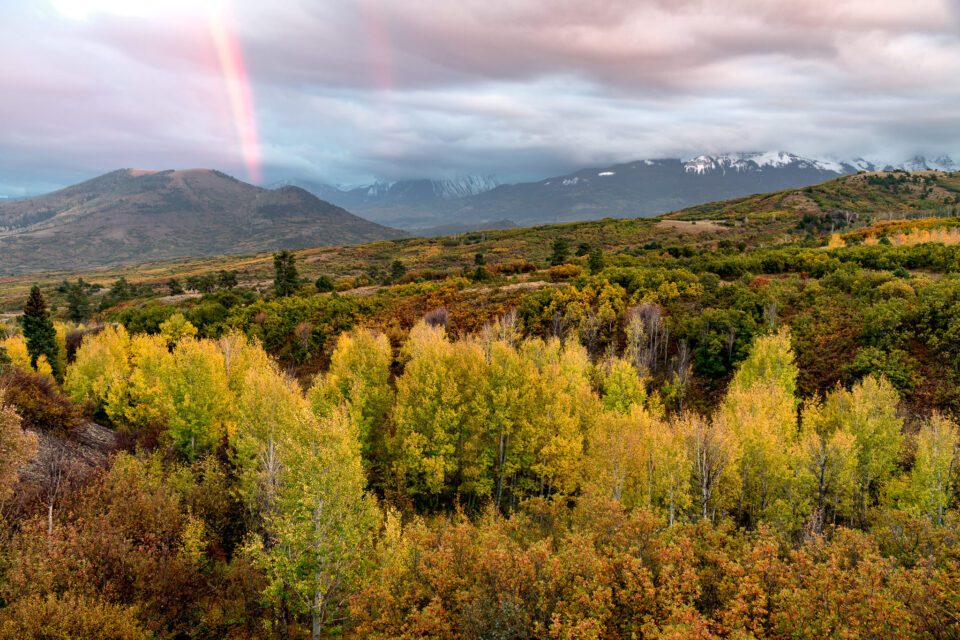
The use of the CPL helped drastically reduce water reflections in the foliage right after rain, resulting in enhanced color and contrast. The CPL also helped bring out the colors of the rainbow, which glowed with deep red colors at sunset.
Here is an example of a waterfall that was captured with the same filter:
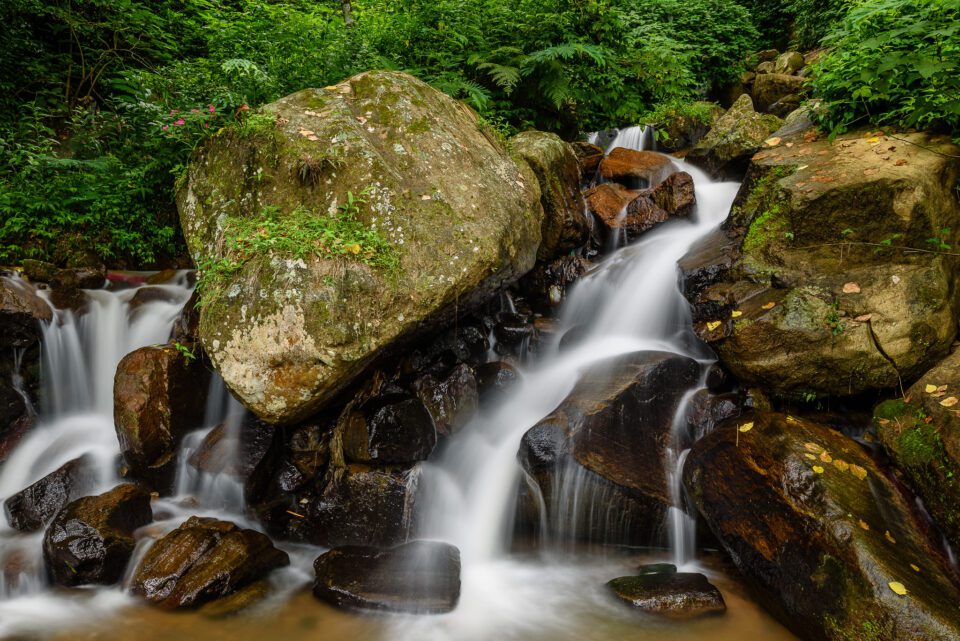
While you can see some reflections in the water, those reflections are actually heavily reduced, thanks to the CPL that I had mounted on my lens. If it wasn’t for the CPL, the brightness of the reflections coming from the rocks would have competed with the white color of the falling water, making the image look much worse in comparison.
Another reason why CPLs are useful, is because they can help significantly reduce atmospheric haze in images. Haze can be a real problem when photographing landscapes, so if one uses a CPL in the field, it is possible to cut it down quite a bit in camera and then reduce it even more in post-processing software. Take a look at the below image that I captured in Jordan with a CPL:
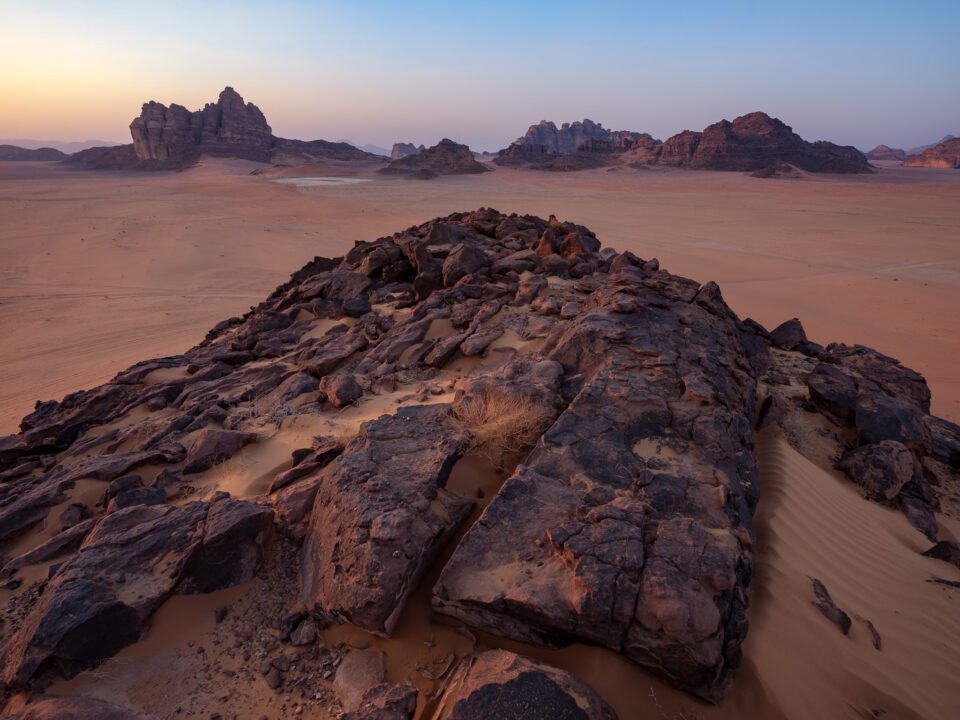
It was a very hazy day in Wadi Rum, so using a CPL was essential in order to bring out the features of the mountains in the distance.
Polarizing filters can be a bit challenging to use, especially for those who have never used them before. You also have to be very careful when deploying them on wide angle lenses. If you want to know more about polarizing filters, I have written a detailed article on how to use polarizing filters, with plenty of examples and useful information.
Neutral Density Filter
Do you know how images of waterfalls with silky and smooth-looking, milky water are captured? For many of such images, photographers intentionally use Neutral Density (ND) filters that only let very little light through, which basically increases the length of the exposure. While one could stop down their lens to a very small aperture in order to reduce the amount of light reaching the camera sensor, doing so often does not block enough light to make the water look smooth. Plus, small apertures result in less detail in images due to the effect of diffraction, so it is best to use a proper filter instead, while using the best aperture.
Using a dark neutral density filter requires a good support system, since shutter speed will decrease significantly, based on how much light the ND filter lets through. For example, a 6-stop ND filter that I use only transmits 1% of the light. With this little light getting through, the scene looks very dark when I look through the viewfinder and yet surprisingly, autofocus is still operational. 6 stops means that if I were shooting a scene at 1/250th of a second without a filter, the shutter speed would drop down to 1/4th of a second as soon as I mount the 6 stop ND filter on the lens. Here is an image that was captured using an ND filter in order to slow down the shutter speed of the camera to 6 seconds:
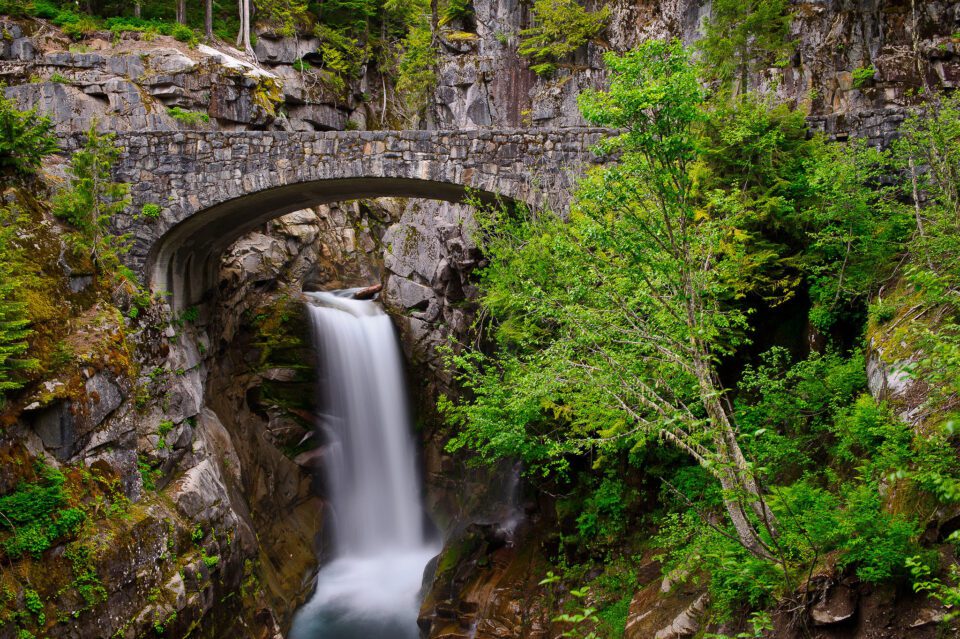
Some polarizing filters are dark enough on their own that you could just use them instead of using an ND filter to create beautiful waterfall images, instead of a combination of an ND + CPL.
Graduated Neutral Density Filter
Graduated ND filters are similar to regular ND filters, except they gradually go from dark to completely clear. This gradual transition is important for landscapes, because it should only darken the brightest area of the scene without touching the darker parts of the scene such as the foreground. Although a lot of photographers seem to be utilizing HDR and blending techniques to capture the full dynamic range of the scene today, I personally prefer to use Graduated Neutral Density (GND) filters whenever possible. For example, if I am photographing a sunrise or sunset and the sky is several stops brighter than the foreground, I will use my 0.6 (2 stop) or 0.9 (3 stop) Graduated ND filter to darken the sky. Take a look at the below image of a filter holder with a GND on it:
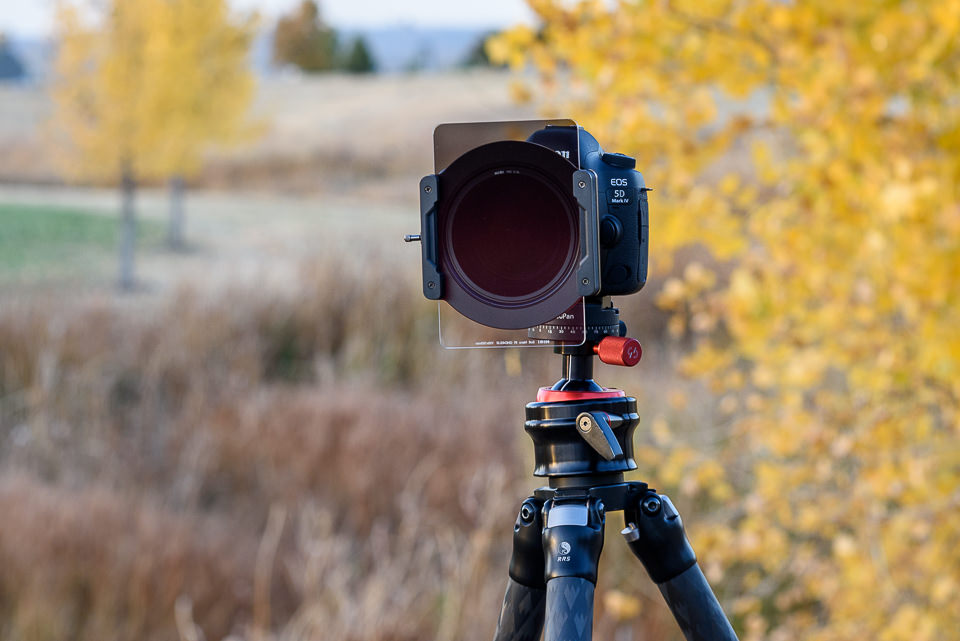
As you can see, the filter transitions from dark on the top to completely clear on the bottom, with a gradual transition in the middle. This is what allows some of the light to be blocked by the filter. Now let’s take a look at how it can affect an image:
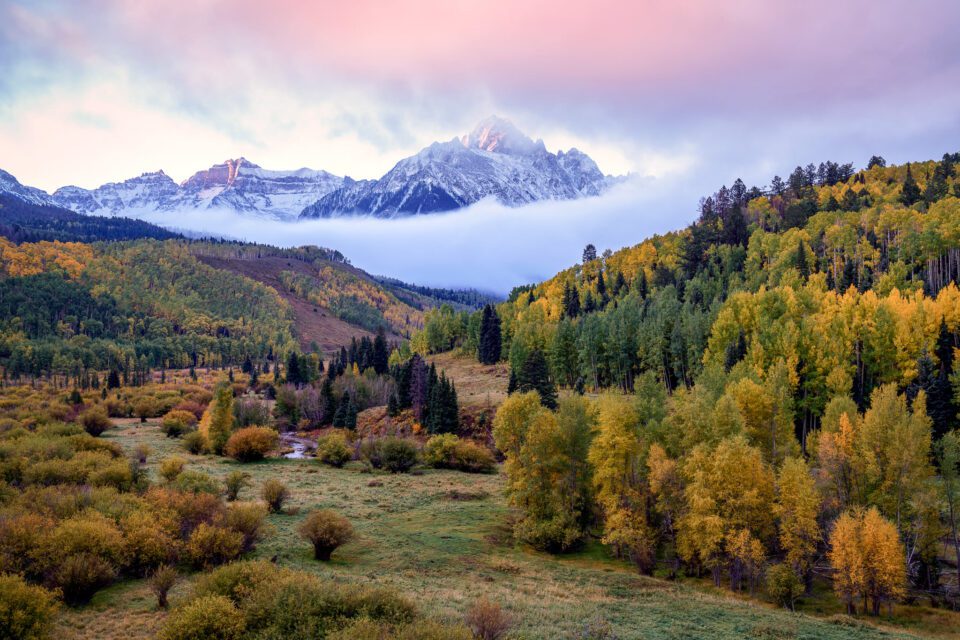
The above image would have been very difficult to capture without a GND filter, because the sky was so much brighter compared to the foreground. By holding a 3-stop GND filter in front of the lens, I was able to bring down the brightness of the sky and preserve its colors. Without a filter, I would have been forced to bracket my shots in order to create an HDR or blend images in Photoshop, which would have taken me more time and effort.
One major hassle with GND filters, is that they take up more space than CPLs do, since they are larger rectangular filters (there are some circular GNDs out there, but you should not use those). Why? Because with rectangular filters you are able to control the point from which the scene will turn from dark into clear. In one scene, the sky might take up 20% of the image, while in another one with beautiful clouds it might take up 50% or more of the image. That’s where you will need to move the graduated filter up and down to accommodate different situations. In order to be able to do this, you will need a filter holder system with rectangular filters. I personally use the NiSi Filter Holder system, but there are many others to choose from.
Recommended Filters
Here is the list of the filters I recommend and personally use:
- B+W 77mm Kaeseman CPL MRC Nano Glass Filter
- B+W 77mm ND MRC Nano 1.8 Filter (6 Stops)
- B+W 77mm ND MRC Nano 3.0 Filter (10 Stops)
- NiSi Filter Holder System + NiSi Glass Filters
Photo Technique
Now that you know what camera gear you need, let’s move on to the fun part – photo technique, which is comprised of three parts: Camera Gear Technique, Composition and Post-Processing. These three elements are all equally important in landscape photography and you have to master them all in order to be able to produce great-looking images that you could potentially showcase and even sell.
Camera Gear Technique
The first thing you need to learn how to use properly, is obviously your camera. If you have never used a DSLR or a mirrorless camera before, get prepared for an intensive learning process. First, you need to master the three pillars of photography: Aperture, Shutter Speed and ISO. Once you get a good grasp of these individually, you will then need to understand how they work together. Next, I would start reading up on such basics as Exposure Stops, camera modes, metering modes and RAW vs JPEG. From there, visit our “Learn Photography” page and start reading other beginner-level articles that will bring you up to speed on the most important photography topics.
If you are able to comfortably shoot in Manual Mode while being able to adjust the exposure by increasing/decreasing the ISO, your basic knowledge of the camera is pretty solid.
Camera Settings
What are the optimal camera settings for photographing landscapes? Here are the settings that I personally use and recommend (good for most DSLRs and mirrorless cameras):
- Camera Mode: Manual. Learn how to shoot landscapes in manual mode. Use the built-in camera meter to see if you need to increase or decrease the shutter speed.
- Aperture: Start at f/5.6 and stop down based on how much of the foreground and background you need to keep sharp. Try not to shoot beyond f/8 (on APS-C sensor cameras) and f/11 (on full-frame) to avoid diffraction.
- Shutter Speed: Doesn’t matter, since you will be using a tripod and adjusting the shutter speed based on what your camera meters. In some cases, when you need to freeze or blur movement, you will have to adjust the shutter speed accordingly by changing aperture and / or ISO, or by using a filter.
- ISO: Whatever your camera’s base ISO is (typically ISO 64 or ISO 100). If you have a setting for “Auto ISO” on your camera, turn it off.
- Image Format: Obviously RAW, Lossless Compressed or Uncompressed (if Lossless Compressed is not available). Set camera bit-rate to the highest number (if available). Many professional cameras allow shooting 14-bit RAW.
- White Balance: Auto, since it doesn’t matter if you shoot RAW – you can easily change White Balance in post-production.
- Color Profile: Doesn’t matter, but you might want to choose AdobeRGB for slightly more accurate histograms.
- High ISO Noise Reduction: Off, you should not be shooting at high ISOs anyway.
- Long Exposure Noise Reduction: On, since it helps reduce noise when shooting long exposures. This setting affects the actual RAW file, so it is a good idea to keep it on by default.
- Vignette Reduction and Other Lens Corrections: Off, best to deal with it in post-production.
- Back Button Focusing: Move your focusing from the shutter release button to a dedicated button on the back of your camera (see focus and recompose). Some cameras might not have this feature, but most do. Most DSLRs and mirrorless cameras either have a dedicated AF-ON button or an AE-L/AF-L button on the back of the camera that can be programmed for autofocus. By switching focusing to a dedicated button, you can focus just once with your thumb, then continue taking pictures without needing to refocus each time. Keep in mind that if you change the focal length of the lens by zooming in / out, you will need to re-acquire focus each time!
- Autofocus: It is up to you whether to keep autofocus on, or switch to manual focus. No matter which focusing method you choose, make sure to use your camera’s live view screen to zoom in tight and focus accurately.
Depth of Field and Hyperfocal Distance
When you photograph landscapes, it is vital to understand the concept of depth of field very well. One of the biggest challenges of landscape photography is to master lens focus and make everything look acceptably sharp. Why is that a challenge, you might ask? Because optics have certain limitations and it is not always possible to bring everything from foreground to background into perfect focus, especially when some objects are very close and others are very far. A good way to illustrate this is to do a quick experiment with your eyes. You will need two objects that can stand on a flat surface – a small and a large object (like a dice and a box of playing cards). Place the larger object vertically about 10 feet away from where you are on a straight surface like a table. Then move back to your position and while holding the smaller object with your index and thumb fingers, extend your hand half way, pointing it towards the larger object. Focus your eyes on the smaller object. Note how blurry the background is and how blurry the larger object is, almost to the point where it blends with other background objects. Now, take the smaller object and place it by the larger object and move back again to your position. Take a look at the smaller object from this distance now. This time, you will notice that both objects look sharp to you and even if you move the smaller object a little away from the larger one, it will not make a difference. The larger object will not get completely blurred like it did when you looked at the smaller object from a close distance. This very simple experiment demonstrates how lenses focus and how subject distance impacts sharpness.
While our eyes work like a fixed 50mm lens, camera lenses allow us to capture much wider perspectives, or allow us to get “closer” to our subjects. Without understanding the relationship between lens focal length, aperture and camera to subject distance, focusing for landscape photography can get rather difficult. For example, if you were photographing a starfish on a beach from a close distance and wanted to get the background horizon to be equally sharp as the starfish, which would you focus on – the starfish or the background? Would you be using a wide-angle or a telephoto lens to get both in focus? What aperture would you be using? A good landscape photographer should know answers to all of these questions and come up with the right solution to the problem. For example, I would have certainly used a wide-angle lens (since longer focal lengths would only isolate the subject more), a relatively small aperture between f/8 and f/16 and would have focused on an area somewhere between the starfish and the background. Where exactly would I focus? This is where you need to understand hyperfocal distance and how to find it.
What is hyperfocal distance? Basically, hyperfocal distance is the focusing distance that gives your photos the greatest depth of field. When you focus your camera on the hyperfocal distance, everything from half of the distance all the way to infinity will be in focus. For example, if my hyperfocal distance is 50 feet, everything from 25 feet to infinity will be in focus. Why is hyperfocal distance important? In the previous example with starfish, if I focused my camera on the starfish or the background (infinity), either the starfish or the background would have been blurry. I want both to look sharp, so if I knew where the hyperfocal distance is and I focused on it, I could potentially get to the point where both appear sharp. Obviously, my camera to subject distance, lens focal length, sensor size and aperture are all variables that play a huge role here, so I will need to look into those very carefully in order to reach my goal. The camera to subject distance is especially important – if the subject is way too close, no combination of aperture and focal length will lead to a sharp photo…
The best way to calculate hyperfocal distance is to use the “double the distance method“, where you approximate the distance from your camera to the nearest subject you want to be sharp, then simply double that distance. In the example with the starfish, if I knew that the starfish was 5 feet away from my camera, the hyperfocal distance would be at 10 feet (double distance), as simple as that! From there, I would have to roughly estimate where the 10 foot mark is for me to focus on (say a piece of rock in sand), then use my camera’s live view screen to focus on that rock and I’m set. With my hyperfocal distance in the right spot of the frame, I would have to play with my camera’s aperture to get to the point where everything looks reasonably sharp. If I’m maxed out on aperture and the scene is still not sharp, then I’m simply too close to the subject. I either have to use a wider lens, or physically move away from the subject.
Some photographers give advice to focus somewhere in the middle of the frame or a third of the way, without knowing all the variables mentioned above. I would be careful listening to such advice, since you will often end up getting yourself frustrated with blurry images. The double the distance method works very well and it is easy to use in the field.
Bear in mind that hyperfocal distance calculators are not designed for modern high resolution digital cameras, so I wouldn’t recommend them for landscape photography (see Spencer’s article on why hyperfocal distance charts are wrong). In addition, why waste your time looking things up, if all you have to do is estimate the distance to your subject and then double it? It is simple and it works!
Bracketing
When you face tough lighting situations, where you have a huge difference in contrast between the darks and the whites, shoot in brackets of 3 to 5 (depending on your camera capabilities). Bracketing not only allows you to try post-processing techniques like HDR, but it also gives you options for better exposure (see Iliah Borg’s excellent article “when in doubt, bracket“). You might choose one exposure over another and then further work on it in Lightroom or Photoshop. You might pick some parts of one image and merge them with another image using masking and other blending techniques in Photoshop or other software. Simply put, you will have more options to recover information from your images.

